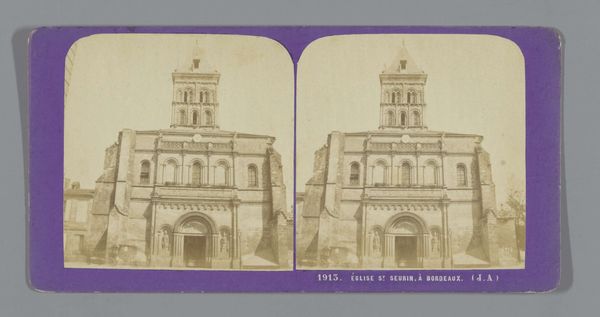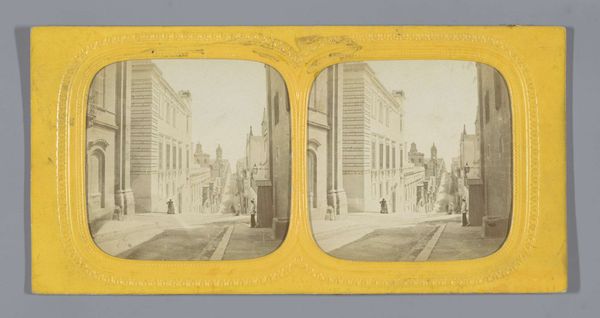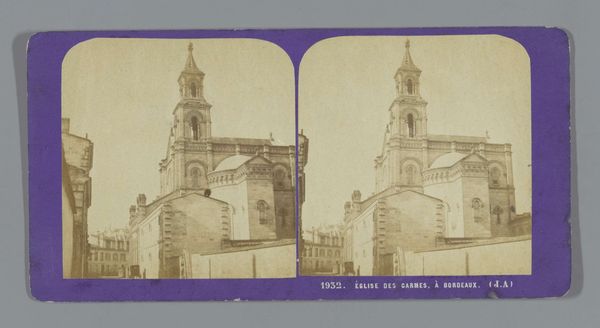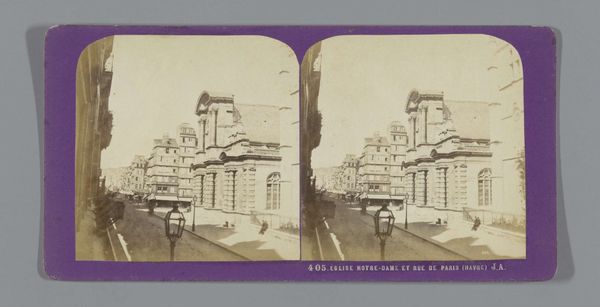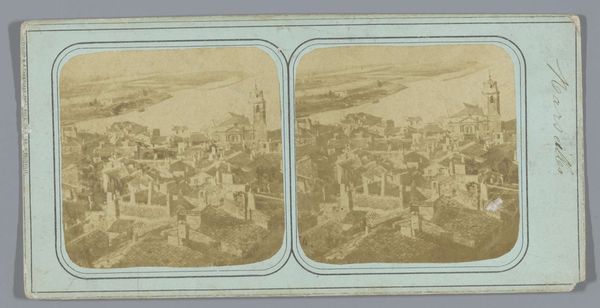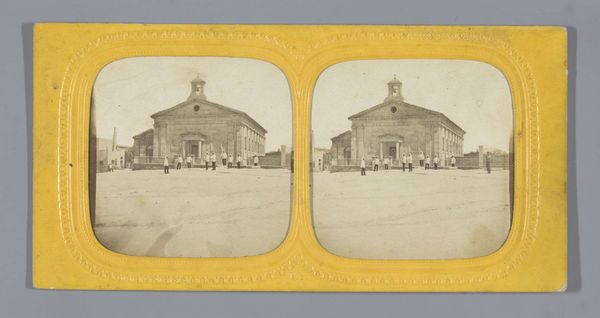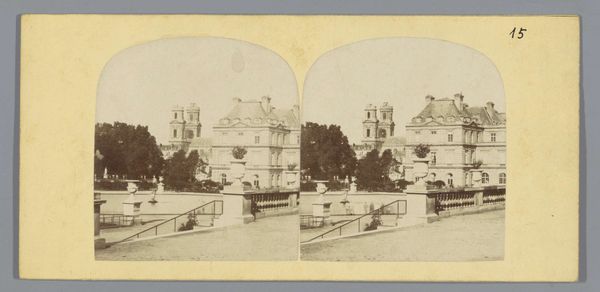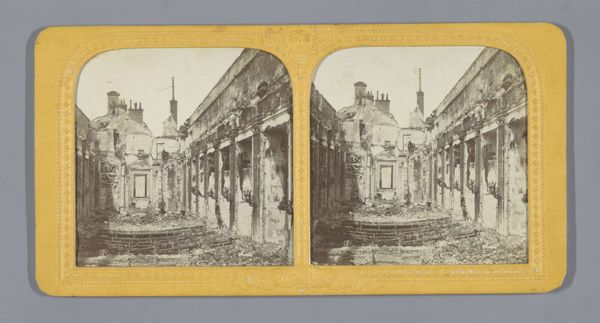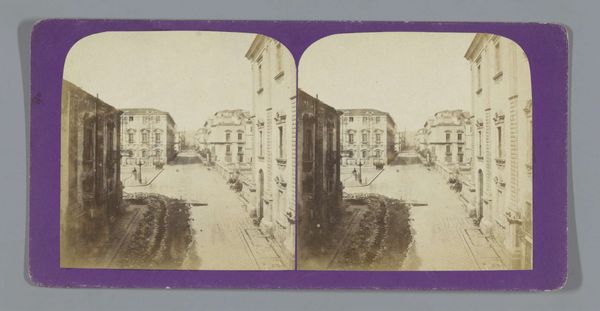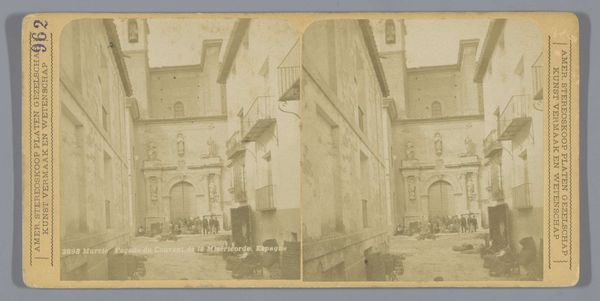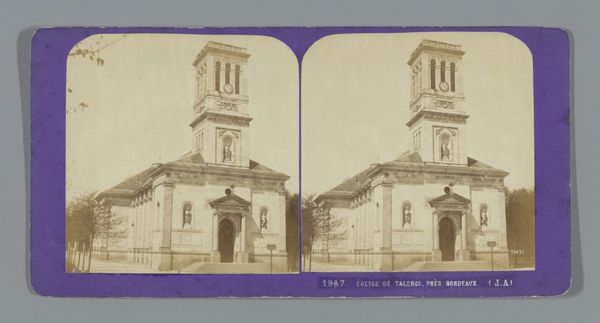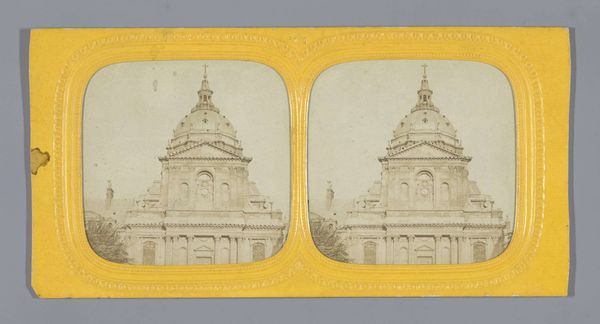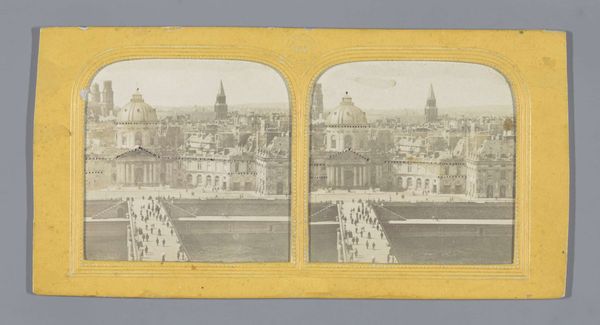
photography, architecture
#
photography
#
cityscape
#
architecture
Dimensions: height 88 mm, width 174 mm
Copyright: Rijks Museum: Open Domain
This stereoscopic image shows the Sint Nikolaaskerk in Boulogne-sur-Mer, France, and was made using an early photographic process. The church stands as a monument to institutional power, both religious and civic. In 19th-century France, the Church was closely aligned with state power. The visual codes of classical architecture, seen in the church's facade, were used to convey authority and tradition. This architectural style connects the church to a lineage of European power structures, from the Roman Empire onwards. Boulogne-sur-Mer, as a port city, was a site of social and economic exchange. The church served not only as a place of worship but also as a symbol of stability and order within this dynamic urban environment. Note the street lamps and vendors that were starting to appear in great numbers in such urban centers. Historical archives, architectural plans, and sociological studies can help us understand the complex relationship between religious institutions, urban development, and social life in 19th-century France. The meaning of art and architecture is always contingent on its social and institutional context.
Comments
No comments
Be the first to comment and join the conversation on the ultimate creative platform.
